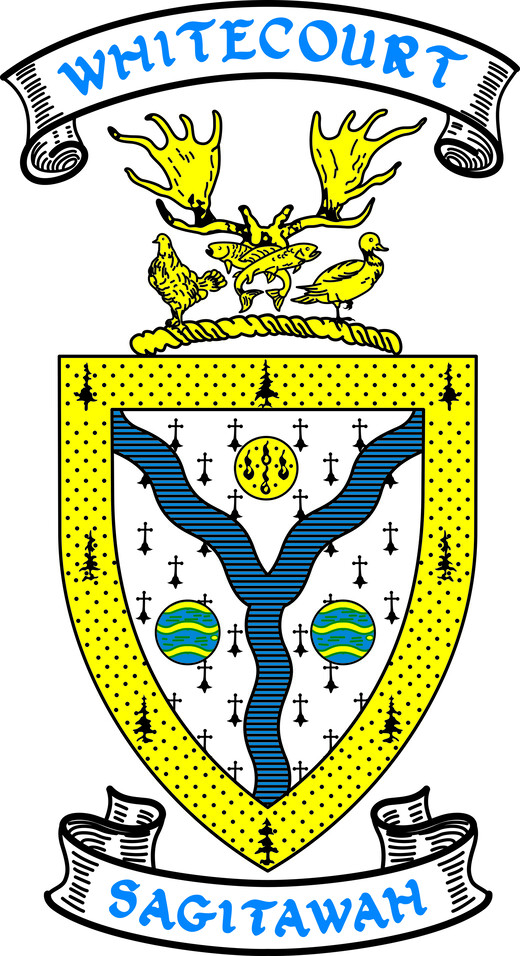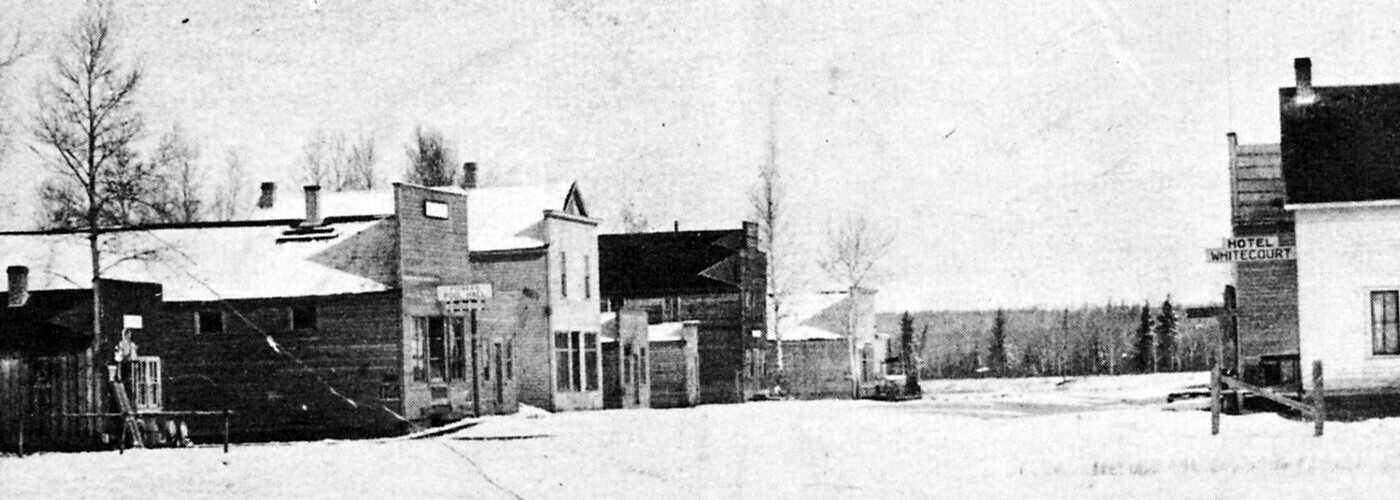The original inhabitants, the Woodland Cree Nation, call this beautiful area Sagitawah – “the place where the rivers meet.” Located on the eastern border of the foothills of the Rocky Mountains , Whitecourt is nestled in a valley at the confluence of four waterways:
- The mighty Athabasca River, winding east through the gap between the Swan Hills and House Mountain from the Columbia Icefield Glacier, a small precious remainder of the ice cover once so significant in sculpting our landscape.
- The beautiful McLeod River, flowing northeast, down from the eastern slopes of the Rockies.
- The Sakwatemau (Eagle) River, joining the Athabasca River from the northern glacial basin lakes, Carson and Pegasus.
- Beaver Creek, flowing down from the springs of House Mountain in the south.
The rivers were crucial for transportation and sustenance for early residents. The soil is well-suited to support the typical flora of the softwood lumber which provides the primary resource for the area. The hills surrounding the lakes were home to a plentiful variety of wildlife and held invisible riches of energy resources that continue to support Whitecourt today.
In 1897, the Hudson’s Bay Company (HBC) recognized that Sagitawah had many of the advantages and opportunities required to operate a successful trading post. A seasonal post was built close to the present location of the Whitecourt Golf and Country Club. The rush for Klondike gold brought a steady stream of prospectors who found it a convenient stopping and staging point. After Treaty 8 was signed at Grouard in 1899, Alberta Abraham exercised his option to take a homestead and live off the reserve and became the first settler in Sagitawah.
As traffic through the valley increased, the HBC felt justified in employing a full time agent at the post. John Goodwin and his wife move to Whitecourt in 1904/05, took a homestead, and worked as the HBC agent.
The controversial name of Whitecourt was chosen when a post office was constructed in 1910. Settlers in the area apparently preferred the traditional names of “Sagitawah” or “McLeod Flats,” but according to one account, the Post Master in Greencourt registered the name as Whitecourt after Walter White, who carried the mail across the trail from Greencourt. Whitecourt became the official postal address and the name of the hamlet. And so began the “modern” saga of Sagitawah, or as we now know it: Whitecourt.
By the late 1920s, Whitecourt was a well-established settlement boasting two hotels, a restaurant, a resident doctor, a bank, a school, a pool hall, a livery barn, several general stores, a laundry and shoe repair business, a butcher shop and two churches.
After World War II, and through both boom and bust years of the last half of the 20th century, Whitecourt continued to thrive and grow at an average of three percent a year along with the services required to meet the needs of this vibrant community. In the year 1959 the community was incorporated as a village – and in the year 2009 celebrated its 50th anniversary.
Today the Town of Whitecourt provides a wide variety of urban amenities and numerous recreational and leisure opportunities.

